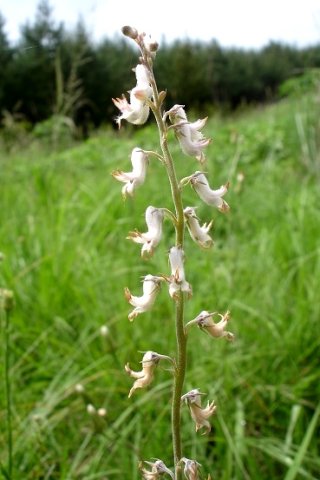Cyphia longifolia

Author: Ivan Lätti
Photographer: Judd Kirkel Welwitch
Cyphia longifolia, commonly the seaslug baroe and in Zulu intikintiki, is a slender herb that grows from a tuber. Many South African Cyphia plants are called baroe, a name handed down from early indigenous Khoi people who dug the tubers up for food. The water stored in a baroe could also quench thirst if one knew which plant would yield it. The seaslug baroe tuber probably has a shape that earned such a name.
The leaves, growing on slender stems, are narrowly oblong or linear. The leaf margins are entire or variably toothed, the veins prominent on the lower surfaces. Leaf dimensions are from 2,5 cm to 15 cm long and from 1,5 mm to 8 mm wide.
The species distribution is in the Eastern Cape and KwaZulu-Natal. This photo was taken in the south of KwaZulu-Natal during November.
The habitat is grassland or open scrubland. The habitat population is deemed to be of least concern early in the twenty first century (Smith and Gericke, 2000; Pooley, 1998; iNaturalist; iSpot; http://redlist.sanbi.org).

